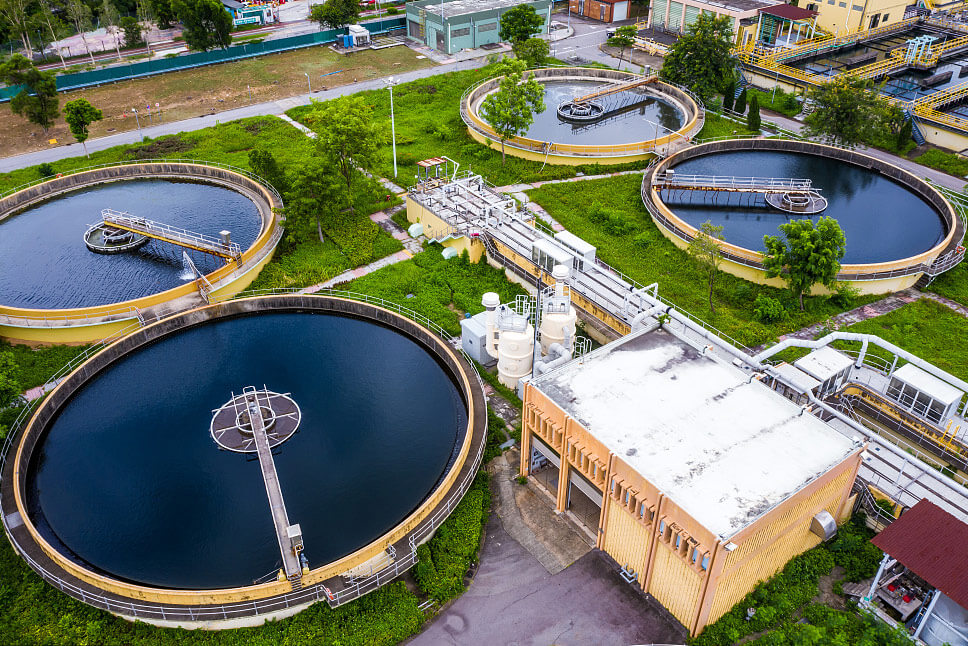
Polyaspartic Acid: A Green and Versatile Chemical
Polyaspartic Acid: A Green and Versatile Chemical
Introduction
Polyaspartic acid (PASP) has emerged as a remarkable chemical with diverse applications, owing to its unique synthesis methods, chemical characteristics, and excellent functional properties. This article aims to provide an in - depth exploration of PASP, covering its raw materials for synthesis, chemical features, and wide - ranging uses.
Synthesis Raw Materials of Polyaspartic Acid
L - Aspartic Acid Method
One common way to synthesize PASP is through the L - aspartic acid method. L - aspartic acid, an α - amino acid, serves as the primary raw material. In this process, L - aspartic acid undergoes a series of reactions. Firstly, under specific conditions, it undergoes thermal polycondensation. During this stage, one L - aspartic acid molecule donates its amino group, while another provides a carboxyl group. They condense through dehydration to form an amide bond. Subsequently, the imino group on the amide bond further reacts with the other carboxyl group of an L - aspartic acid molecule, resulting in the formation of a succinimide ring through dehydration cyclization. This intermediate product is poly (succinimide) (PSI). Finally, PSI is hydrolyzed in an alkaline solution to obtain PASP. If high - quality PASP solid powder is desired, the intermediate PSI and the PASP alkaline solution can be refined through processes such as precipitation and drying. The advantage of using L - aspartic acid as a raw material is that the resulting PASP product has a relatively light color and a wide range of molecular weights (800 - 500000), making it an ideal choice for applications in the field of daily chemicals.
Maleic Anhydride Method
The maleic anhydride method is another prevalent approach for PASP synthesis. In this method, maleic anhydride is a key raw material. Additionally, an ammonia donor is required, and substances such as ammonia water, ammonia gas, or compounds that can generate ammonia upon pyrolysis, like urea, ammonium carbonate, and ammonium chloride, can be used as ammonia donors. The reaction proceeds as follows: maleic anhydride first reacts with the ammonia donor. For example, when maleic anhydride reacts with ammonia water, a reaction occurs to form a mixture of maleate salts, aspartic acid, and its salts under specific temperature and time conditions (such as mixing at a molar ratio of 1:1.2 at 75 - 85 °C and stirring for 2 - 3 h). Then, this mixture is heated to a higher temperature range of 200 - 240 °C, and under the action of a catalyst, a condensation reaction takes place for 6 - 7 h to obtain PSI. Similar to the previous method, PSI is hydrolyzed under alkaline conditions to yield PASP. The maleic anhydride - based synthesis method has the advantages of readily available raw materials, low production costs, relatively simple synthesis steps, and high product yields. However, compared to the L - aspartic acid method, the PASP product obtained by this method usually has a relatively narrow molecular weight range (800 - 15000) and a darker color, often necessitating an additional bleaching process.
Chemical Characteristics of Polyaspartic Acid
Molecular Structure
PASP is a polymer composed of aspartic acid monomers linked by peptide bonds. Its molecular structure contains active groups such as peptide bonds (-CONH -) and carboxyl groups (-COOH). These active groups endow PASP with unique chemical properties. The peptide bond structure is similar to that in proteins, which plays a crucial role in determining the physical and chemical properties of PASP, such as its solubility and reactivity. The presence of carboxyl groups imparts acidic properties to PASP, allowing it to participate in various chemical reactions, such as forming salts with metal ions.
Biodegradability
One of the most remarkable chemical characteristics of PASP is its excellent biodegradability. The amide bond structure in its molecular chain is similar to that of proteins. Microorganisms in the environment possess corresponding enzymes that can act on the active sites of PASP. These enzymes break the amide bonds in the main chain of PASP, causing the polymer to decompose into smaller fragments. Eventually, through a series of biochemical reactions, PASP is completely degraded into small - molecule substances such as carbon dioxide (CO₂) and water (H₂O). Experimental results using methods such as the oxygen consumption (COD) method and the shaking - flask experiment method have shown that the degradation rate of PASP can reach more than 10% within 10 days and more than 60% within 28 days, meeting the OECD (Organization for Economic Co - operation and Development) standards. This biodegradability makes PASP an environmentally friendly chemical, reducing concerns about long - term environmental pollution.
Chelating and Dispersing Ability
Due to the presence of carboxyl groups and peptide bonds, PASP has a strong chelating ability for metal ions. It can form stable chelate complexes with metal ions such as calcium (Ca²⁺), magnesium (Mg²⁺), iron (Fe³⁺), and zinc (Zn²⁺). For example, in water treatment systems, PASP can chelate with calcium and magnesium ions, preventing them from aggregating and forming scale deposits. This chelating ability also contributes to its dispersing effect. PASP can adsorb on the surface of particles in a solution, such as calcium carbonate particles, and prevent them from agglomerating and precipitating, thereby maintaining the stability of the solution system.
Applications of Polyaspartic Acid and Its Functions
Water Treatment
- Scale Inhibition
- In industrial cooling water systems, boilers, and reverse osmosis water treatment processes, scale formation is a common problem. PASP effectively inhibits the formation of scale salts such as calcium carbonate (CaCO₃), calcium sulfate (CaSO₄), barium sulfate (BaSO₄), and calcium phosphate (Ca₃(PO₄)₂). It works by chelating with metal ions in the water, changing the crystallization process of scale - forming salts. For example, in a cooling water system with high calcium ion content, PASP chelates with calcium ions, preventing them from combining with carbonate ions to form calcium carbonate scale. The scale inhibition rate of PASP for calcium carbonate can reach up to 100% under certain conditions, ensuring the normal operation of equipment and reducing energy consumption caused by scale - induced heat transfer resistance.
- Corrosion Inhibition
- PASP also exhibits excellent corrosion inhibition properties. It can adsorb on the surface of metal materials, such as steel pipes in water treatment systems, and form a protective film. This film acts as a barrier, isolating the metal surface from the corrosive medium in the water, such as dissolved oxygen and acidic substances. For instance, in a boiler water system, PASP adsorbs on the inner wall of the boiler, preventing the metal from being corroded by oxygen - containing water, thus extending the service life of the boiler.
- Dispersion
- In water treatment, PASP can disperse suspended particles in water, such as iron oxide (Fe₂O₃) particles and clay particles. By adsorbing on the surface of these particles, PASP imparts them with the same charge, causing the particles to repel each other and remain dispersed in the water. This dispersion function helps to keep the water clean and prevent the deposition of particles, which could otherwise clog pipes and affect the efficiency of water treatment systems.

Agriculture
- Fertilizer Synergist
- PASP can enhance the utilization efficiency of fertilizers in agriculture. When applied together with fertilizers, it chelates with metal ions in the soil, such as iron, zinc, and manganese, which are essential nutrients for plants. This chelation makes these nutrients more easily absorbed by plant roots. For example, in a field with soil lacking in iron availability, PASP chelates iron ions, converting them into a form that can be easily taken up by plants, thereby promoting plant growth and improving crop yields. PASP also helps to reduce the leaching of fertilizers in the soil, making the nutrients in the fertilizers more effectively utilized by plants.
- Soil Improvement
- In addition to being a fertilizer synergist, PASP can improve soil structure. It can increase the water - holding capacity of the soil and enhance soil porosity. By improving soil structure, PASP creates a more favorable environment for plant root growth and the activity of soil microorganisms. For example, in sandy soil, PASP can help the soil particles aggregate, reducing soil erosion and improving water - retention ability, which is beneficial for plant growth in arid and semi - arid regions.
Daily Chemicals
- Cosmetics
- In the cosmetics industry, PASP can be used as a moisturizer. Its ability to retain water is due to the presence of carboxyl groups in its molecular structure, which can form hydrogen bonds with water molecules. PASP can also act as a pH regulator in cosmetics, helping to maintain the stability of the product's formula. For example, in a facial cream, PASP can adjust the pH value to a range suitable for the skin, while also providing moisturizing effects, making the skin feel more hydrated and smooth.
- Detergents
- PASP can be used as a substitute for traditional phosphate - containing builders in detergents. It has good chelating ability for metal ions, which can remove metal - ion - related stains. In a laundry detergent formulation, PASP chelates with calcium and magnesium ions in hard water, preventing them from interfering with the cleaning effect of surfactants. This helps to improve the cleaning power of detergents and reduces the formation of soap scum, making it an environmentally friendly alternative to phosphate - based builders.

Other Fields
- Paper Industry
- In the paper - making process, PASP can be used as a dispersant. It helps to evenly disperse fibers in the pulp suspension, ensuring the uniform formation of paper sheets. By preventing fiber aggregation, PASP improves the strength and smoothness of the paper. For example, in the production of high - quality printing paper, PASP can enhance the quality of the paper by promoting better fiber dispersion.
- Textile and Dyeing Industry
- In the textile and dyeing industry, PASP can be used as a chelating agent. It can remove metal ions in the dyeing bath, such as copper and iron ions, which may affect the color fastness and uniformity of dyeing. By chelating these metal ions, PASP helps to ensure consistent and high - quality dyeing results.
In conclusion, polyaspartic acid, with its unique synthesis methods, excellent chemical characteristics, and wide - ranging applications, has become an important chemical in various industries. Its environmentally friendly nature and diverse functions make it a promising alternative to traditional chemicals, contributing to sustainable development in different fields.
Yuanlian Chemical specializes in the production of polyaspartic acid (PASP),tetrasodium iminodisuccinate(IDS), GLDA, MGDA etc. with stable quality and excellent quantity!





Contact us